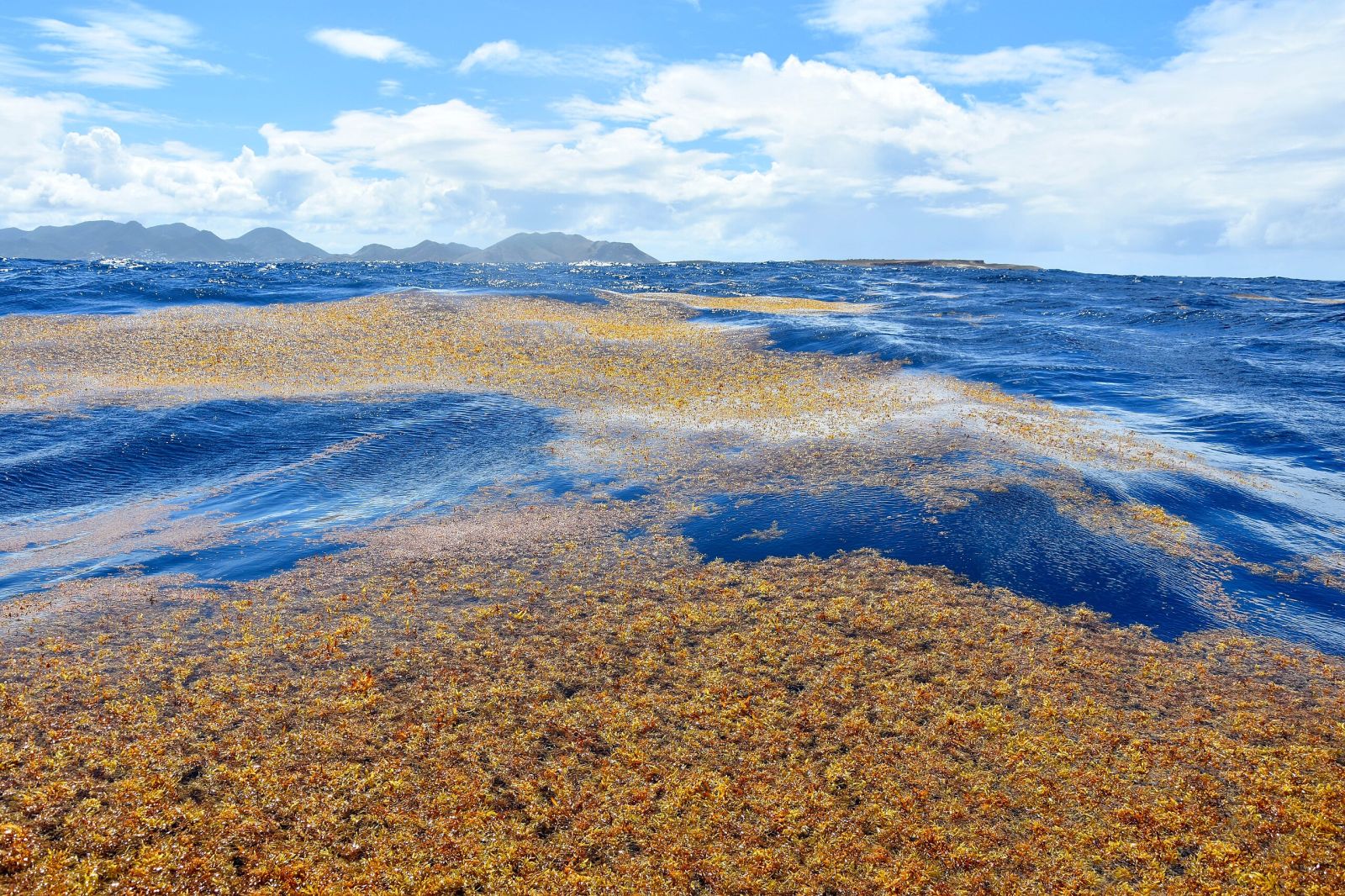Follow us on Google News (click on ☆)
What exactly is sargassum?
Sargassum is a type of brown algae that naturally floats in the ocean. It originates from an area called the "Sargasso Sea," located in the North Atlantic. There, it lives on the surface, never attaching to the seabed, and forms a useful ecosystem: it provides shelter for fish, turtles, and seabirds.

Sargassum off the coast of Tintamare Island, in the Saint-Martin National Nature Reserve.
Image Wikimedia
But since 2011, a strange phenomenon has been observed: a massive belt of algae has formed over thousands of miles (kilometers), stretching between Africa and America. This belt drifts and regularly deposits tons of sargassum on coastlines.
Why has this phenomenon exploded?
Scientists believe several factors are at play:
- Warmer waters, caused by climate change, promote rapid sargassum growth.
- Nutrient runoff (such as nitrogen and phosphorus) from agriculture and rivers (notably the Amazon) feeds these algae, acting like fertilizer.
- Ocean currents can carry these algae over very long distances.
Result: uncontrolled and increasingly frequent proliferation.
A threat to ecosystems... and humans
When sargassum washes ashore, it quickly rots. This releases hydrogen sulfide, a toxic gas in high concentrations, which smells like rotten eggs and can cause headaches, irritation, or nausea.
It also harms tourism, smothers marine life, and requires enormous cleanup efforts.
Research is underway to better predict their arrival, improve collection at sea, and even... repurpose them! Some companies are exploring ways to turn sargassum into compost, paper, or biofuel. But for now, the phenomenon remains difficult to control.